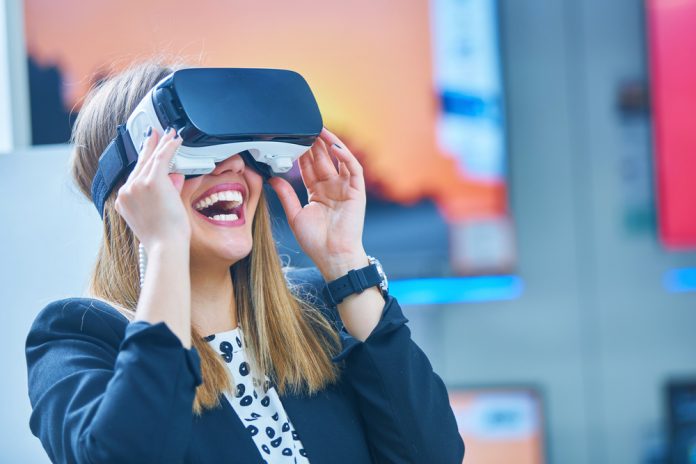
Virtual reality immersion has taken the lead as the preferred approach for soft skills training. Today, artificial intelligence is learning at such a rapid rate people are beginning to believe machines are sentient. It’s time humans take a cue from machines and dedicate themselves to constant learning and evolution.
Machines in workplaces today do most of the heavy lifting – and not only in the literal sense. In offices, data processing is done by machines, leaving people only to interpret the data. In some organizations, the best jobs are held by the people who ensure the machines work as intended. Of course, machines don’t excel at everything.
Soft Skills are Human Traits
It doesn’t matter how much smarter machines get. Human beings crave human interaction thanks to millions of years of evolution. As the world dealt with pandemic lockdowns, people missed the ability to shake hands and lock eyes with other people.
We adapted to use tools like Zoom and Microsoft Teams, but they lacked much of the interaction we needed. By 2021, the term Zoom fatigue became real, and we looked for better ways to meet safely.
This proves that humans will always prefer to speak to other human beings. No matter how smart a machine can be, we always look for a real smile or the warmth of another person’s eyes. This is why soft skills are strictly reserved for people.
What are Soft Skills
Don’t believe soft skills are vital in today’s workforce? One LinkedIn survey states 92 percent of recruiters and hiring managers to believe soft skills matter as much or more than hard skills.
You may wonder exactly what soft skills are. FlexJobs and PAIRIN recently put together a list of the top 25 soft skills. This list includes accountability, assertiveness, collaboration & teamwork, compliance, and conflict management.
Soft skills often work together with the hard skills organizations have historically measured. This is why soft skills are difficult to track. Take your sales reps for example.
Your top sales person is a fantastic speaker who never forgets the names of her customers. Her clients do business with your company because they trust her and feel a human connection. Your organization measures the sale. How much of the sale is attributed to human communication and empathy?
Why VR Immersion is Best for Soft Skills Training
Presence
Presence refers to the feeling of being in a real situation. When you watch a video in a classroom, you know you are watching actors. The same is true when your soft skills training is done online.
When in virtual reality training, the brain interprets the virtual world as a real experience. With you present in the space, the interactions take on new forms. Your brain grasps concepts as it experiences them rather than through memorization efforts.
Safe Space
Another benefit of virtual reality training is the ability to practice without judgment. Each of your employees will begin their training at a different level.
Employees may not feel comfortable opening up in a classroom setting. In a single-person simulation, they can practice without fear of getting it wrong. You can be certain employees won’t offend stakeholders or customers in the real world.
We all bring a certain degree of unconscious bias. Recognizing that bias and addressing it is a soft skill in itself. In a self-contained VR environment, employees can work through their biases at their own pace.
Efficient Training
Soft skills training using classrooms or online programs takes a lot of time. The average company can only afford to spend less than 5 percent of each employee’s time on training. A soft skills training program requiring hours is not practical.
A key measure of a VR training program’s return on investment (ROI) is the reduction in training time. Training sessions that required hours get cut down to only minutes.
Engagement
The best part about the improved efficiency is that material retention grows while training time decreases. Engagement is a training challenge organizations have faced for years. And it’s one that VR actively addresses.
VR learners are more focused when immersed. As a result, they are more connected to the material and confident in using it on the job. A study conducted by Stanford University and Technical University in Denmark found that putting students in VR laboratories led to a 76 percent increase in learning effectiveness over traditional teaching methods.
Expense Drops as Program Grows
The cost of VR training is front-loaded. You have to find a service provider to create the program around your needs. Businesses can use training modules from providers like Edstutia or create VR spaces unique to their company.
Once the software is in the works, you must get the necessary hardware. You will need headsets, and the more you need, the better the cost.
Data from PWC shows that when you roll out a VR training program with only 375 headsets, you’ve reached parity with classroom programs. The larger the deployment, the better return. Companies should adopt VR at scale and with full support behind the upgrade to get the most cost savings and ROI.
Conclusion
As machines get better at doing what machines do, we must improve at being human. Virtual reality immersion trains employees safely and efficiently at a competitive cost. Make soft skills training a vital part of on-the-job growth. As work evolves, we will learn these “soft” skills have become power skills.




